June 27, 2023 | The Most Splendid Housing Bubbles in America, June Update: 2nd Overall YoY Price Drop since 2012. Biggest in Seattle, San Francisco, Las Vegas, Phoenix, San Diego, Portland, Dallas…

It’s still spring selling season, when sales volume and prices nearly always rise on a month-to-month basis, and they did this spring too, but not enough, and compared to a year ago, the 20 cities in the S&P CoreLogic Case-Shiller Home Price Index, released today, fell by 1.7%, the biggest year-over-year decline since 2012, following the 1.1% decline in the prior month, after the gigantic Fed-money-printer gains during the pandemic. The 20-City Index is now down 3.5% from the peak last June:
Today’s data for “April” is a three-month moving average of home prices whose sales were entered into public records in February, March, and April. That’s the spring selling season, when prices always rise from the prior month, and did so even during Housing Bust 1.
On a month-to-month basis, the 20-City Index rose 1.7% in April from March, but that was a lot less growth than in April 2022 (+2.3%) and in April 2021 (+2.2%), which is why year-over-year, prices fell further:
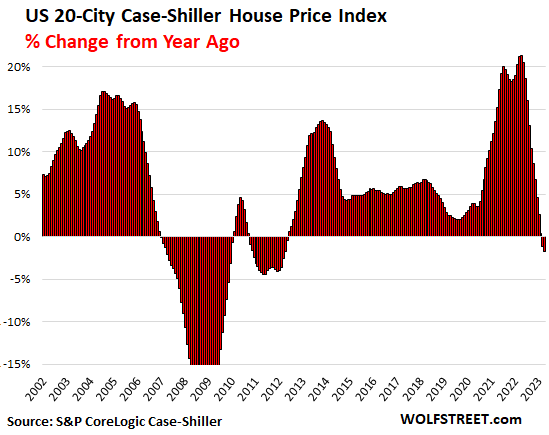
The list of year-over-year price decliners keeps getting longer. Prices are now down in 10 of the 20 metropolitan areas that the S&P CoreLogic Case-Shiller Home Price Index covers. Here are the metros with year-over-year price declines:
- Seattle: -12.4%
- San Francisco Bay Area: -11.1%
- Las Vegas: -6.6%
- Phoenix: -6.1%
- San Diego: -5.6%
- Portland: -5.2%
- Denver: -4.5%
- Los Angeles: -3.2%
- Dallas: -2.9%
- Washington DC: -0.5%
Prices in 19 of the 20 markets have dropped from their respective peaks (ranging from May to July 2022). The exception is the New York City metro, which squeaked past its prior high of July 2022. From their respective peaks, prices have dropped the most in these metros:
- Seattle: -12.9%
- San Francisco Bay Area: -12.0%
- Las Vegas: -9.9%
- Phoenix: -9.4%
- Dallas: -8.5%
- San Diego: -6.1%
- Portland: -6.0%
- Denver: -5.6%
- Los Angeles: -4.2%
- Tampa: -3.0%
Seattle metro:
- Month to month: +2.3%.
- From the peak in May: -12.9%.
- Year over year: -12.4%.
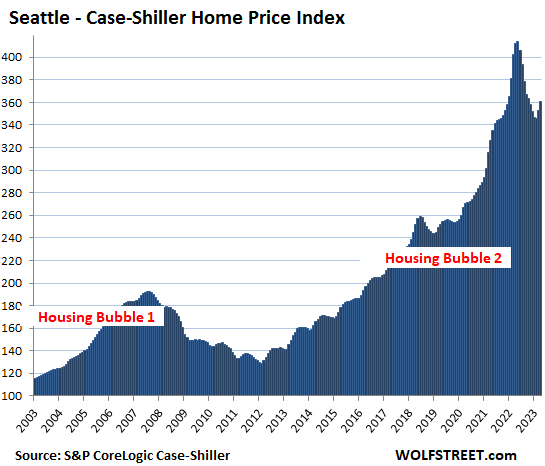
Seattle’s year-over-year decline of 12.4% was the fifth month in a row of year-over-year declines:
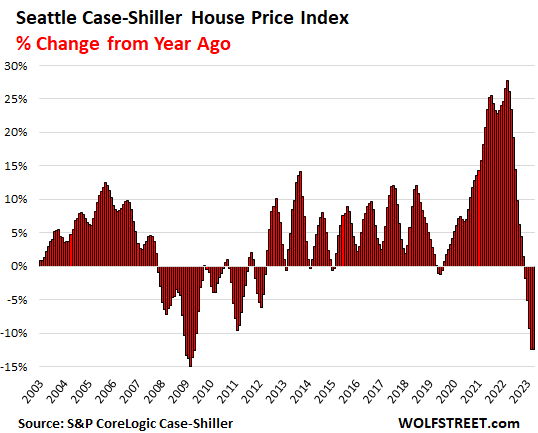
The San Francisco Bay Area:
- Month to month: +2.2%.
- From the peak in May: -12.0%.
- Year over year: -11.1%.
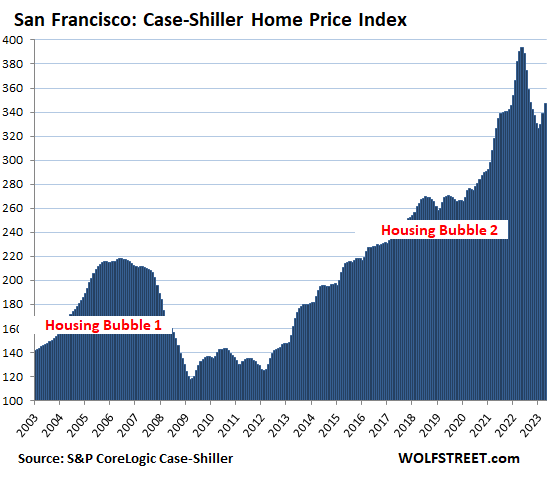
This was the sixth month in a row of year-over-year declines:

And this is the situation for condos in the San Francisco Bay Area: After a big run-up, they’ve now fallen back to where they’d first been in May 2018:
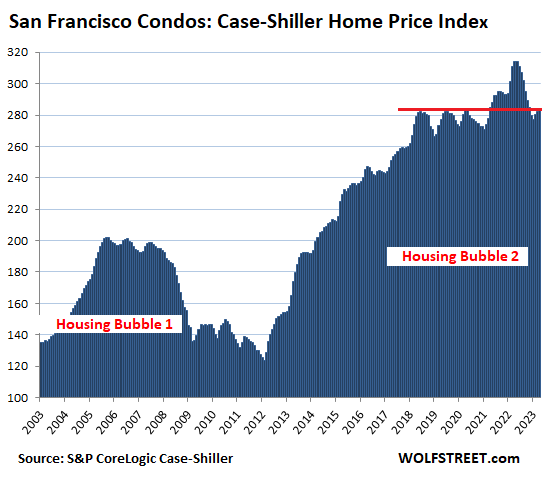
Las Vegas metro:
- Month to month: +0.7%.
- From the peak in July: -9.9%.
- Year over year: -6.6%
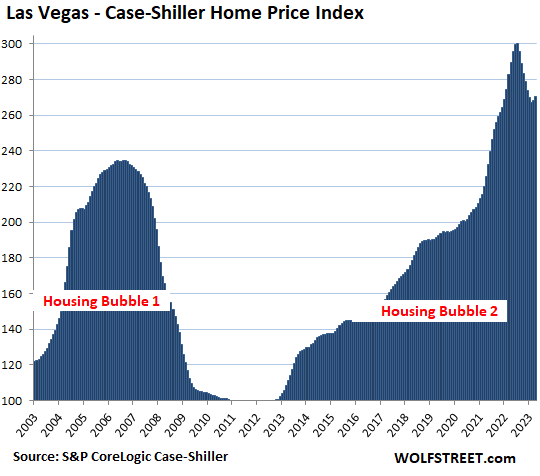
Phoenix metro:
- Month to month: +0.7%.
- From the peak in June: -9.4%.
- Year over year: -6.1%
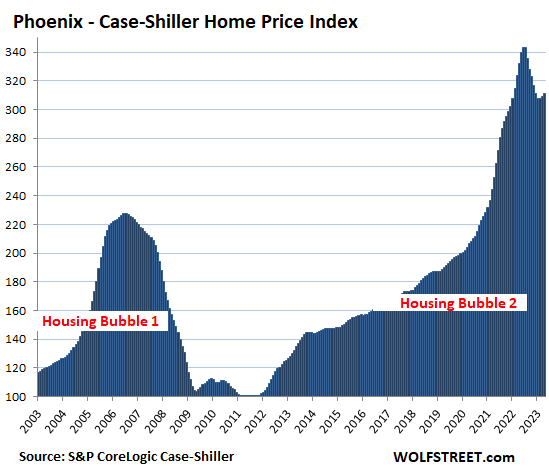
San Diego metro:
- Month to month: +2.0%.
- From the peak in May: -6.1%.
- Year over year: -5.6%.
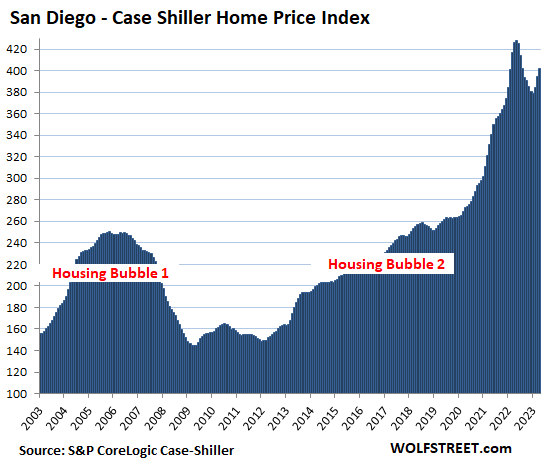
Portland metro:
- Month to month: +1.5%.
- From the peak in May: -6.0%.
- Year over year: -5.2%.
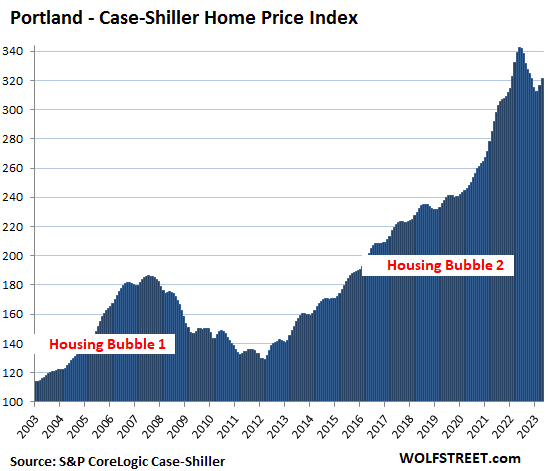
Denver metro:
- Month to month: +1.6%.
- From the peak in May: -5.6%.
- Year over year: -4.5%.
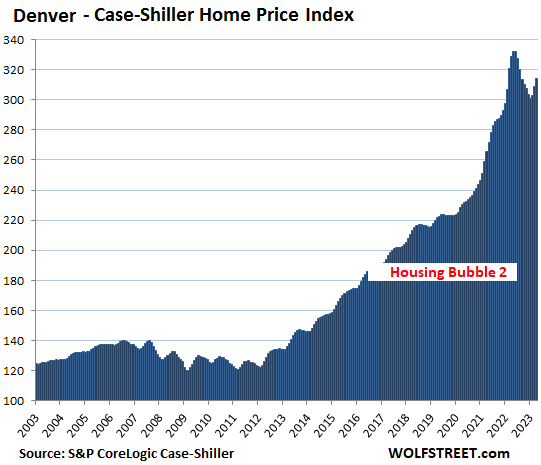
Los Angeles metro:
- Month to month: +1.7%.
- From the peak in May: -4.2%.
- Year over year: -3.2%.
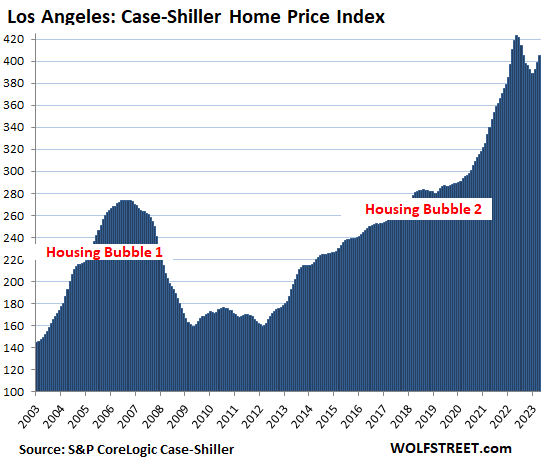
Dallas metro:
- Month to month: +1.4%.
- From the peak in June: -8.5%.
- Year over year: -2.9%
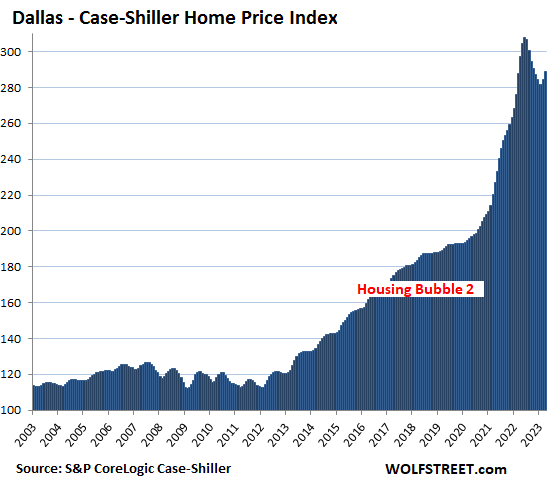
Washington D.C. metro:
- Month to month: +1.6%.
- From the peak in June: -1.6%.
- Year over year: -0.5%
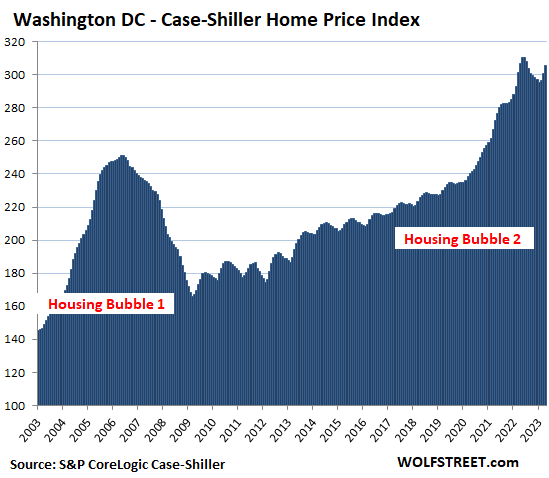
Boston metro:
- Month to month: +2.9%.
- From the peak in June: -1.6%.
- Year over year: +0.9%
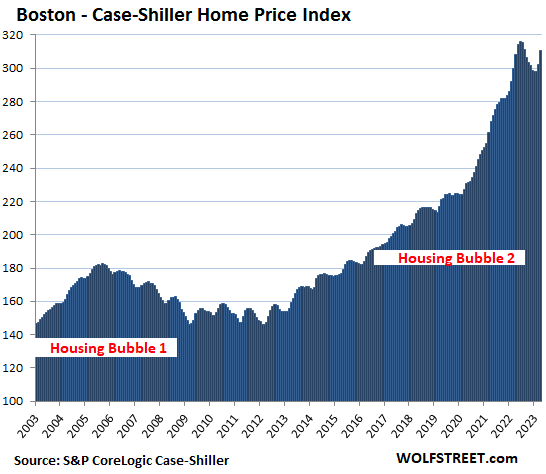
Tampa metro:
- Month to month: +0.8%.
- From peak in July: -3.0%
- Year over year: +2.4%
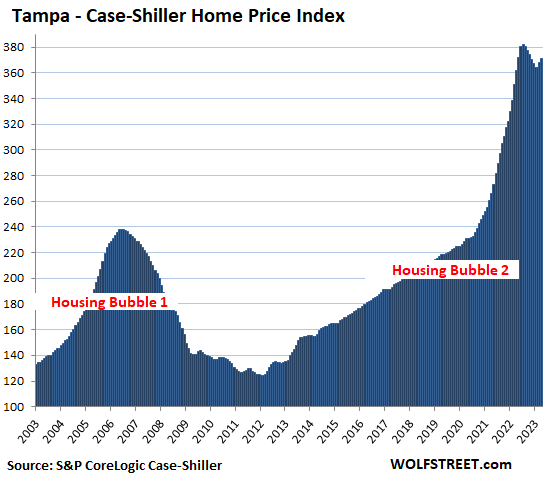
Miami metro:
- Month to month: +0.9%
- From peak in July: -1.3%
- Year over year: +5.2%
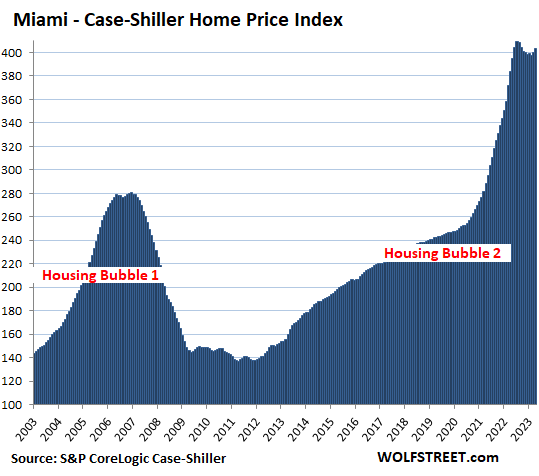
New York metro:
- Month to month: 1.5%.
- Squeaked past the July high: +0.4%
- Year over year: +3.0%
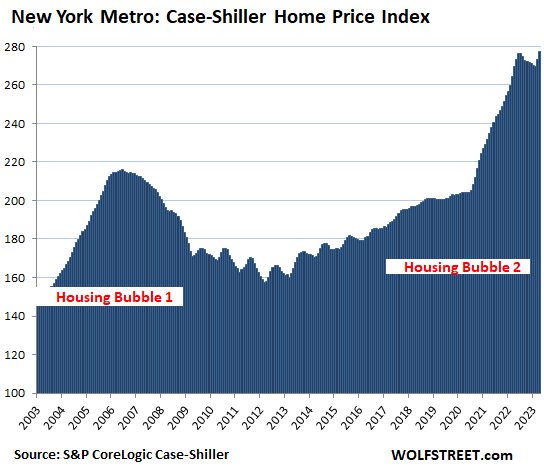
Methodology. The Case-Shiller Index uses the “sales pairs” method, comparing sales in the current month to when the same houses sold previously. The price changes are weighted based on how long ago the prior sale occurred, and adjustments are made for home improvements and other factors (methodology). This “sales pairs” method makes the Case-Shiller index a more reliable indicator than median price indices, but it lags months behind.
The Case-Shiller indices were set at 100 for the year 2000. The Los Angeles index value of 405 in April is up by 305% since 2000. This makes Los Angeles the #1 most Splendid Housing Bubble in terms of price increases since 2000. Miami and San Diego are just a hair behind, both up by over 300% as well.
The remaining six markets in the Case Shiller index have experienced far less house price inflation since 2000, and don’t qualify for this list of the Most Splendid Housing Bubbles.
STAY INFORMED! Receive our Weekly Recap of thought provoking articles, podcasts, and radio delivered to your inbox for FREE! Sign up here for the HoweStreet.com Weekly Recap.
Wolf Richter June 27th, 2023
Posted In: Wolf Street











